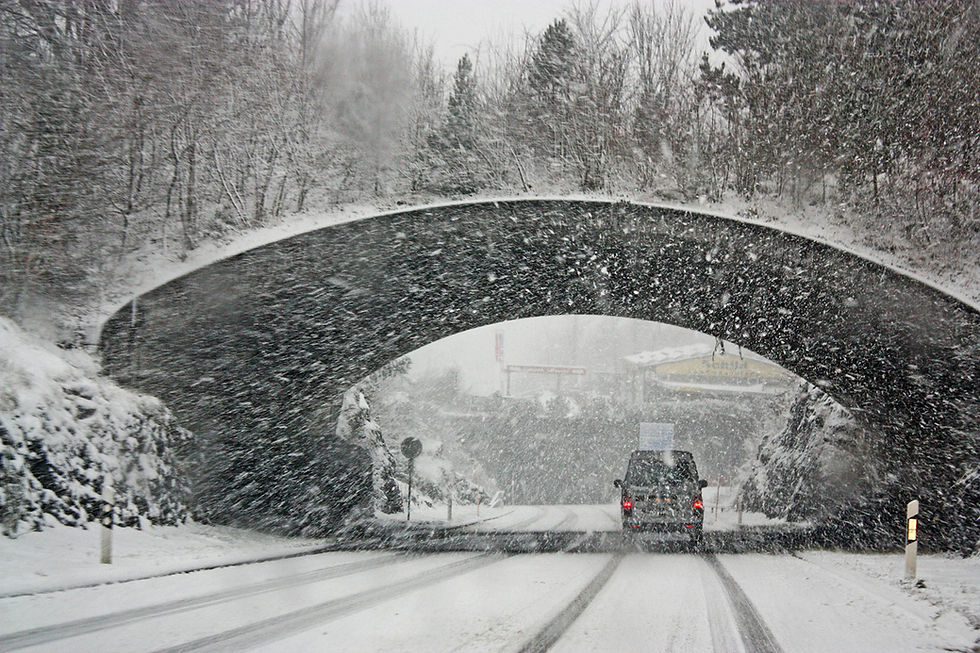Checking the tread on your tires
- Sonny's Auto Repair
- Jan 14, 2022
- 3 min read

A vital feature of your car’s tires are the treads. The treads of a tire are what allow your car to gain traction with the road keeping your car stable avoiding slipping and sliding all over the road.
The main function of tire treads is to move water and slush away from the tire so the treads can come into direct contact with the road to ensure that friction is not lost. The treads allow the tire to remain stable of muddy or snowy roads as well as help to maintain traction on gravel and rocks. When a car driving through water cannot maintain friction with the road due to the lack of tread on the tires, it is called hydroplaning. This is a fancy way of saying that your car had gone completely out of control and has become an extreme safety hazard to you, your passengers and everyone around you.
Having sufficient treads on your tires also helps to keep you tires from skidding while turning and braking.
What is the difference between friction and traction?
While these terms may seem like they have identical meanings, there is a slight difference. All four tires stay firmly on the road due to friction. Friction is the resistance that one surface encounters while moving over another. When the surface of the tire encounters the surface of the road, friction helps to keep the tire from losing its grip on the road. The friction is increased by the treads since the treads help to move water away and there are more individual spaces on the tire connecting to road at once. If you have a tire worn down so there are no treads, water cannot be moved away as easily, and the smooth surface of the tire is not going to have much resistance with it comes into contact with the road.
Traction, on the other hand, is specific to the drive wheel, or the wheel that transmits the force of the engine to allow the car to move in the desired direction. If the drive wheel cannot gain traction, which is also a matter of friction between two surfaces, the car will not move. We have all been in a situation where a car was in the mud or snow and we hit the gas just to have one tire spin out of control while the car remains stuck. The tire that is spinning is the drive wheel, and unless you have an all-wheel drive vehicle, you will also notice that the other three tires aren’t turning at all. At that point, the friction between those wheel and road is irrelevant since the car isn’t going anywhere.
How to tell if you have enough tread.
There are three ways to tell if you have enough tread on your tires. The first is the popular Penny test. If the tread depth you are looking for is 2/32 of an inch. On a penny, the area between the edge of a penny and the top of Lincoln’s head is about 2/32 of an inch. If you put a penny in the tread with the top of Lincoln’s head touching the tire and the tire doesn’t reach the top of Lincoln’s head, you have less than 2/32 of an inch and you should replace the tire. Check the wheel in several places all around the tire, in the center and along the edges.
2/32 of an inch is the bare minimum you should be driving with. If you use the penny and the tire just reaches Lincoln’s head or it barely covers it, you should still replace your tires.
A better way to check the depth of your tread is with a different coin. On a quarter, the length between the top of the coin and the top of Washington’s head is about 4/32 of an inch. If the tire doesn’t reach the top of Washington’s head, you should consider changing your tires soon. 4/32 is the minimum depth considered to be safe.
There is also a built-in check on most tires. Most tires will have a tread-wear bar molded into the tire itself. This bar will be 2/32 of an inch from the surface of the tire. When your tread wears down to the point that it is even with this bar, it is an indication you have 2/32 of an inch remaining and it is time to change your tires.
Don’t mess with your tires. They are a very important safety feature of your car. If you are not sure what you are looking for when it comes to the depth of the tread of your tires, bring your car down to the shop and we will check them for you.



Comments